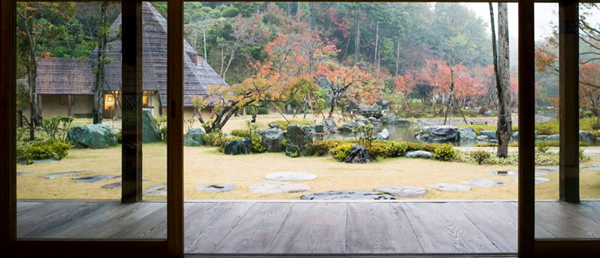
“There are mountains hidden in hiddenness…”
Shamanic Gatekeeper Apprentice Training:
Creative module of STONE.
Dear Beautiful Creative Being,
Starting on the 5th October, a cohort of deeply curious and dedicated BEZA students and apprentices will embark on an 8 week deep dive into the creative power of stones.
THE CREATIVE POWER OF STONES!? Yes, you read that right!
“When we connect with our bones, the stones of our bodies, we connect with the powerful medicine of the mountains.”
Sharmanic Gatekeeper Apprentice Training
Creative module of STONE
Dear Beautiful Creative Being
Starting on the 5th October, a cohort of deeply curious and dedicated BEZA students and apprentices will embark on an 8 week deep dive into the creative power of stones.
THE CREATIVE POWER OF STONES!? Yes, you read that right!
“When we connect with our bones, the stones of our bodies, we connect with the powerful medicine of the mountains.”
Spiritual seekers have been going into the mountains for millennia. They have gone into the spacious, hidden mysteries of the stones to clarify, ground and empower themselves, returning back to the villages to heal and liberate all beings.
You are invited to come and learn with us – to become channels for the wisdom that originates from Mother Earth herself. We will learn how the stones – our bones, the mountains, minerals and metals, when combined or collided, create form – a resonating vibration that travels into the world.
By traveling into the deep memory of your bones, you will come to realize and embrace yourself as the creator! With this response-ability you’ll find power, and with this power an ancient knowing – that what you experience is a reflective resonance of your creation.
The stones and our bones are condensed energy – condensed power. Power and creation are synonomous. Entering our bones we access the power of the creativity to manifest who it is we are.
The time is now to bring that powerful force of creation into manifestation!
This training is for the committed, eager to uncover their limitless creativity. It is through resonance – telling our story, communication, leading, organizing and networking that we manifest our lives. When we study stones we re-cognizethat the bones of our body and their connection to the ancient stories of our being can be engaged to supercharge our creative ability – and hence our freedom.
We explore Stone’s intrinsic power and strength; their capacity for recording and storing information; and how their minerals are the structural building blocks of our bodies and minds, and all communication or transmission channels.
Stones hold a storehouse of secrets. Our evolution has depended on them. They were our first tools; our first art; symbolised our first myths; and the first sounds and languages. Stones have oriented our human collective from conception through to memorialised immortality. Gatekeepers to unknown realms, they inspire us to their noblest peaks and, they become barring barriers and porous boundaries.
The Stones and Mountains – they give us perspective and concepts like duality and unified fields of infinity. They are a record of our travels through tyrannical times to the sweetness of space. By their power and grandeur, our bones – the stones, propel us forward. They fuel our reach as far as far can lead – often to forgetfulness. Yet, they help us remember. Since forever, it has been so.
We all can remember The Way – to those ‘mountains hidden in hiddenness’ where, in their darkest depths, ‘stone women with nothing but eyeball’s in their skulls’ are mystically giving birth to ‘newborns in the night’.
We invite you to join the Creative Stone Module and remember who you are in your bones – to know your purpose, and work with the Stones to express yourself and make yourself whole with the Earth.
All you could ever wish to know is in your hands – a Gatekeeper you are, a Mountain of infinite wisdom. You know this in the stoney-bones of your Earthen body.
Just Ask is the translated name of the powerful mountain shaman who brought me back home through the stones. All you have to do to come back home is just ask.
Ekan Nangaku

Make Way for your Creative Expression!
- Return home to your true, whole self and become a Facilitator in the New Earth Consciousness Revolution
- Regain sovereignty over your spiritual, emotional, mental, and physical intelligence.
- Access your full potential and serve all beings through wisely dispensing your Medicine Gifts
Throughout the training you will have access to empowering wisdom:
- Personal development within a spiritual community
- Integrative training supported by Level II & III students
- 80hrs contact time per elemental module
- Inclusive of supportive embodiment modalities: meditation, mentoring, community council, divination, yoga, Qi Gong, breath work, creative arts, movement and more.

Make Way for your Creative Expression!
- Return home to your true, whole self and become a Facilitator in the New Earth Consciousness Revolution
- Regain sovereignty over your spiritual, emotional, mental, and physical intelligence.
- Access your full potential and serve all beings through wisely dispensing your Medicine Gifts
Throughout the training you will have access to empowering wisdom:
- Personal development within a spiritual community
- Integrative training supported by Level II & III students
- 80hrs contact time per elemental module
- Inclusive of supportive embodiment modalities: meditation, mentoring, community council, divination, yoga, Qi Gong, breath work, creative arts, movement and more.












